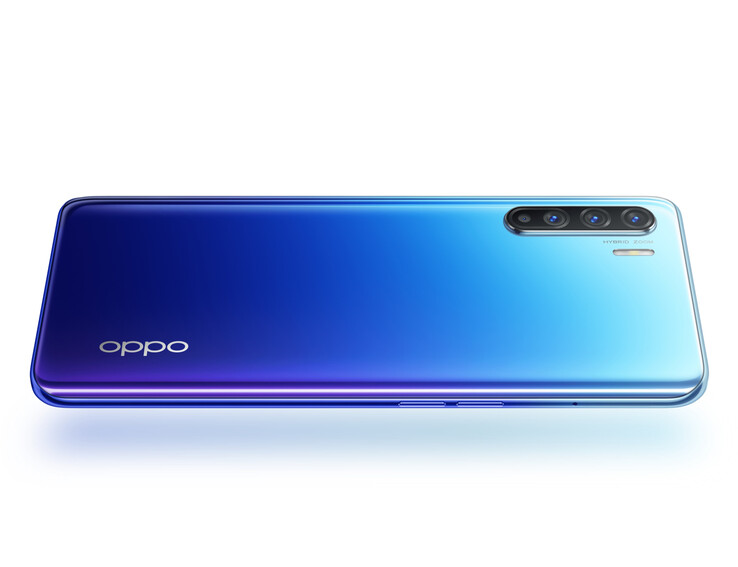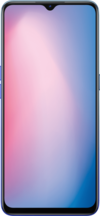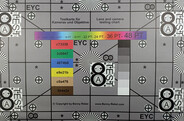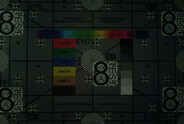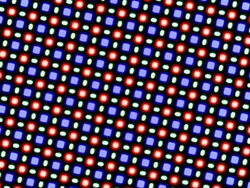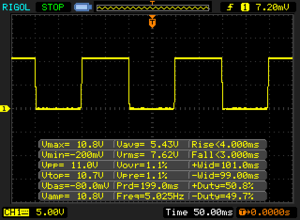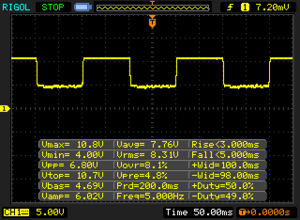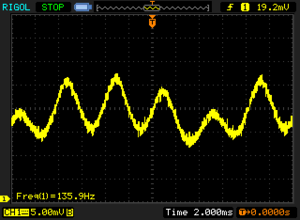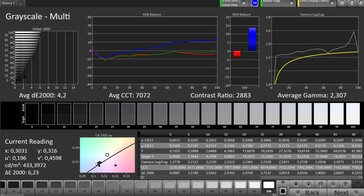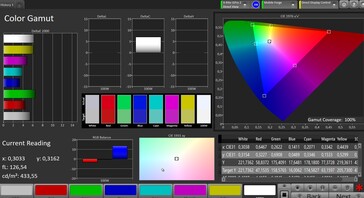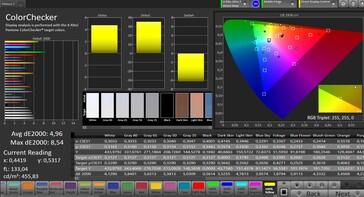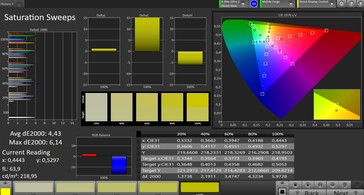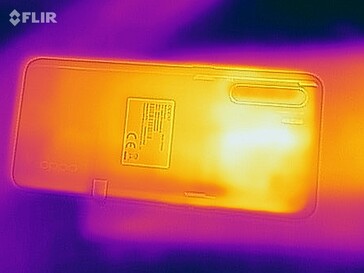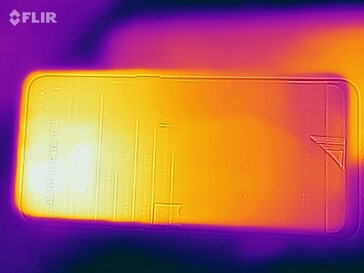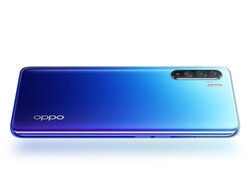Oppo Reno3 Smartphone Review – Many Lenses for Little Money
Comparison devices
Bewertung | Rating Version | Datum | Modell | Gewicht | Laufwerk | Groesse | Aufloesung | Preis ab |
|---|---|---|---|---|---|---|---|---|
| 80.1 % v7 (old) | v7 (old) | 06 / 2020 | Oppo Reno3 Helio P90, PowerVR GM9446 | 170 g | 128 GB UFS 2.1 Flash | 6.40" | 2400x1080 | |
| 81.2 % v7 (old) | v7 (old) | 03 / 2020 | Oppo Reno2 SD 730G, Adreno 618 | 189 g | 256 GB UFS 2.0 Flash | 6.50" | 2400x1080 | |
| 81.6 % v7 (old) | v7 (old) | 07 / 2019 | Xiaomi Mi 9T SD 730, Adreno 618 | 191 g | 64 GB UFS 2.0 Flash | 6.39" | 2340x1080 | |
| 80.3 % v7 (old) | v7 (old) | 01 / 2020 | Motorola One Hyper SD 675, Adreno 612 | 210 g | 128 GB UFS 2.0 Flash | 6.50" | 2340x1080 |
Case, equipment and operation - Plastic case with large memory
The joy about the fact that Oppo is finally offering its models in Europe is currently further diminished by the fact that the manufacturer is making a mess of the model names: The Oppo Reno3, for example, looks almost exactly like the Oppo Find X2 Lite, but offers a different SoC and no 5G. In our review of the Oppo Reno3 Pro, we noticed even more confusion with numerous different models.
Compared to the Oppo Reno 3 Pro, the normal Reno3 looks simpler on the outside, with a classic plastic chassis in black or blue with a gradient. There is a waterdrop notch in the screen, which means that the predecessor's automatically extending selfie camera no longer exists. The glossy black back of our test device is very susceptible to fingerprints. The smartphone is quite light at 170 grams, the case is slim and only yields minimally under pressure.
The Reno3 is well equipped with 128 GB mass storage, and it also has a brisk UFS 2.1 memory. Even 8 GB of RAM is a decent amount for this price range. Modern Bluetooth 5 and NFC for contactless payment are also on board.
In terms of WiFi speed, the smartphone is on class level. The most important LTE bands are supported to ensure operation in Europe, but worldwide you may have problems dialing into the 4G network on further journeys.
The fingerprint sensor is under the screen and unlocks the smartphone quite reliably. The Reno 3 is also quick to use in other ways. A 90 Hz screen, as in the Reno3 Pro, which lowers the perceived response time of the Smarpthone, isn't available here.
| Networking | |
| iperf3 transmit AX12 | |
| Oppo Reno2 | |
| Oppo Reno3 | |
| Motorola One Hyper | |
| Xiaomi Mi 9T | |
| iperf3 receive AX12 | |
| Oppo Reno2 | |
| Oppo Reno3 | |
| Motorola One Hyper | |
| Xiaomi Mi 9T | |
Cameras - Quite good in the price range
We already know the four camera lenses on the back from the Oppo Reno3 Pro or also from the Oppo Reno2: The main lens offers up to 48 megapixels, but is probably also used in the 12 megapixel mode, in which four pixels each are combined into one large and very light-sensitive pixel by means of pixel binning.
It actually takes quite decent photos, especially in the test device's price range. The detail sharpness is high, but the very high exposure is noticeable here as well, which sometimes makes bright areas outshine. Even under low light, the pictures are still quite decent, but there could be a bit more detail here. Additionally, there is a telephoto and a wide angle lens, between which you can also zoom in small steps.
Videos can be recorded in 4K and at 30 fps at maximum, but then only with the main lens. If you want to use the other lenses and the zoom, only 1080p is available.
The front camera has a resolution of 44 megapixels, but uses a few megapixels less by default, possibly to keep the file size of the image files a bit smaller. The full 44 megapixels can also be activated if desired. In detail, the pictures look bright despite the high resolution, but not very detailed and a bit grainy.
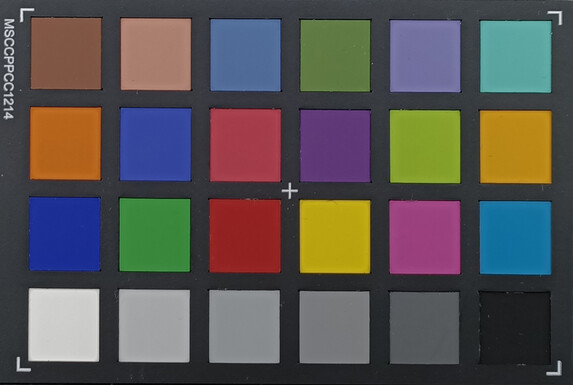
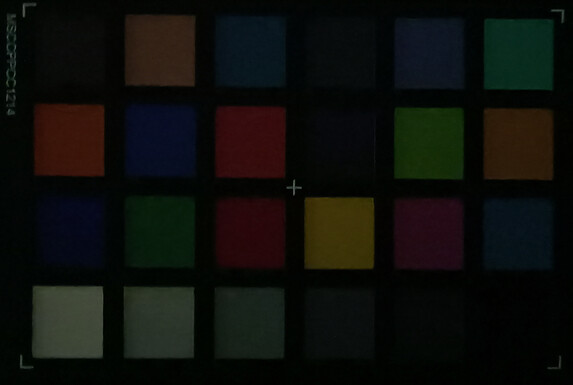
Display - Strong PWM
The AMOLED screen is not quite as bright as its predecessor, but still resolves with a slightly enhanced 1080p resolution. Unfortunately, it shows a PWM flicker at a rather low frequency, so sensitive people should try the screen before using it for the first time.
The display's color deviations are within limits and the response times are short. The brightness should be sufficient for outdoor use on cloudy days.
| |||||||||||||||||||||||||
Brightness Distribution: 90 %
Center on Battery: 595 cd/m²
Contrast: ∞:1 (Black: 0 cd/m²)
ΔE ColorChecker Calman: 4.96 | ∀{0.5-29.43 Ø4.78}
ΔE Greyscale Calman: 4.2 | ∀{0.09-98 Ø5}
100% sRGB (Calman 2D)
Gamma: 2.307
CCT: 7072 K
| Oppo Reno3 AMOLED, 2400x1080, 6.4" | Oppo Reno2 AMOLED, 2400x1080, 6.5" | Xiaomi Mi 9T AMOLED, 2340x1080, 6.4" | Motorola One Hyper IPS, 2340x1080, 6.5" | |
|---|---|---|---|---|
| Response Times | 55% | 52% | -332% | |
| Response Time Grey 50% / Grey 80% * (ms) | 8 ? | 3.6 ? 55% | 4 ? 50% | 44 ? -450% |
| Response Time Black / White * (ms) | 7 ? | 3.2 ? 54% | 3.2 ? 54% | 22 ? -214% |
| PWM Frequency (Hz) | 136 | 260.4 ? | 245.1 ? | 2404 ? |
| Screen | 14% | 27% | -2% | |
| Brightness middle (cd/m²) | 595 | 679 14% | 589 -1% | 455 -24% |
| Brightness (cd/m²) | 598 | 683 14% | 589 -2% | 444 -26% |
| Brightness Distribution (%) | 90 | 98 9% | 96 7% | 78 -13% |
| Black Level * (cd/m²) | 0.53 | |||
| Colorchecker dE 2000 * | 4.96 | 3.5 29% | 2.5 50% | 3.86 22% |
| Colorchecker dE 2000 max. * | 8.54 | 6.8 20% | 4.9 43% | 6.59 23% |
| Greyscale dE 2000 * | 4.2 | 4.2 -0% | 1.6 62% | 4 5% |
| Gamma | 2.307 95% | 2.27 97% | 2.24 98% | 2.3 96% |
| CCT | 7072 92% | 6532 100% | 6544 99% | 7367 88% |
| Contrast (:1) | 858 | |||
| Total Average (Program / Settings) | 35% /
24% | 40% /
33% | -167% /
-85% |
* ... smaller is better
Display Response Times
| ↔ Response Time Black to White | ||
|---|---|---|
| 7 ms ... rise ↗ and fall ↘ combined | ↗ 4 ms rise | |
| ↘ 3 ms fall | ||
| The screen shows very fast response rates in our tests and should be very well suited for fast-paced gaming. In comparison, all tested devices range from 0.1 (minimum) to 240 (maximum) ms. » 20 % of all devices are better. This means that the measured response time is better than the average of all tested devices (20.2 ms). | ||
| ↔ Response Time 50% Grey to 80% Grey | ||
| 8 ms ... rise ↗ and fall ↘ combined | ↗ 3 ms rise | |
| ↘ 5 ms fall | ||
| The screen shows fast response rates in our tests and should be suited for gaming. In comparison, all tested devices range from 0.165 (minimum) to 636 (maximum) ms. » 19 % of all devices are better. This means that the measured response time is better than the average of all tested devices (31.6 ms). | ||
Screen Flickering / PWM (Pulse-Width Modulation)
| Screen flickering / PWM detected | 136 Hz | ||
The display backlight flickers at 136 Hz (worst case, e.g., utilizing PWM) . The frequency of 136 Hz is very low, so the flickering may cause eyestrain and headaches after extended use. In comparison: 53 % of all tested devices do not use PWM to dim the display. If PWM was detected, an average of 8111 (minimum: 5 - maximum: 343500) Hz was measured. | |||
Performance, emissions and battery life - Good runtime
The MediaTek Helio P90 is a SoC found in many mid-range smartphones. If you look at the pure performance figures, it quickly becomes clear that it is inferior to Qualcomm SoCs, even the Oppo Reno2 with Snapdragon 730G offered more performance. For everyday use and simple apps, the performance difference is quite unproblematic, mostly you can also navigate with the Reno3 without any problems.
It gets annoying when you look at the microSD reader's performance: It can't cope with our reference card Toshiba Exceria Pro M501 in the Reno3 and only achieves extremely low transfer rates with a slower microSD card. The internal memory is faster than in the Reno2.
The Oppo Reno3 can definitely get warm when you demand it. The warming is then noticeable, on hot summer days it could also become unpleasant.
The loudspeaker on the bottom edge does a pretty good job: it even offers some audible lower mids and doesn't overdo it too much with the trebles. The sound gets a bit undefined at maximum volume, but if you lower the power a bit, the sound is really pleasant. Additional audio devices can be connected via a 3.5mm connection and Bluetooth, which works without any problems.
The battery offers 4.025 mAh, which is a quite usual capacity, but the Reno smartphone can still score with good runtime, the somewhat weaker SoC probably pays off here. The charger is a bit weaker than the Oppo Reno3 Pro with a maximum of 20 watts, but can still fully recharge the smartphone in a little over 2 hours.
| PCMark for Android | |
| Work performance score (sort by value) | |
| Oppo Reno3 | |
| Oppo Reno2 | |
| Xiaomi Mi 9T | |
| Motorola One Hyper | |
| Average Mediatek Helio P90 (8736 - 13156, n=2) | |
| Work 2.0 performance score (sort by value) | |
| Oppo Reno3 | |
| Oppo Reno2 | |
| Xiaomi Mi 9T | |
| Motorola One Hyper | |
| Average Mediatek Helio P90 (7129 - 9654, n=3) | |
| GFXBench | |
| on screen Aztec Ruins Normal Tier Onscreen (sort by value) | |
| Oppo Reno3 | |
| Oppo Reno2 | |
| Xiaomi Mi 9T | |
| Motorola One Hyper | |
| Average Mediatek Helio P90 (6.5 - 9.3, n=3) | |
| Average of class Smartphone (6.2 - 166, n=211, last 2 years) | |
| 1920x1080 Aztec Ruins Normal Tier Offscreen (sort by value) | |
| Oppo Reno3 | |
| Oppo Reno2 | |
| Xiaomi Mi 9T | |
| Motorola One Hyper | |
| Average Mediatek Helio P90 (6.4 - 11, n=3) | |
| Average of class Smartphone (3.4 - 367, n=211, last 2 years) | |
| on screen Aztec Ruins High Tier Onscreen (sort by value) | |
| Oppo Reno3 | |
| Oppo Reno2 | |
| Xiaomi Mi 9T | |
| Motorola One Hyper | |
| Average Mediatek Helio P90 (3.5 - 5.8, n=3) | |
| Average of class Smartphone (0.85 - 144, n=212, last 2 years) | |
| 2560x1440 Aztec Ruins High Tier Offscreen (sort by value) | |
| Oppo Reno3 | |
| Oppo Reno2 | |
| Xiaomi Mi 9T | |
| Motorola One Hyper | |
| Average Mediatek Helio P90 (2.4 - 4.3, n=3) | |
| Average of class Smartphone (1.2 - 129, n=211, last 2 years) | |
| Oppo Reno3 | Oppo Reno2 | Xiaomi Mi 9T | Motorola One Hyper | Average 128 GB UFS 2.1 Flash | Average of class Smartphone | |
|---|---|---|---|---|---|---|
| AndroBench 3-5 | 151% | -12% | 158% | 195% | 330% | |
| Sequential Read 256KB (MB/s) | 504 | 469.3 -7% | 492.7 -2% | 492.2 -2% | 761 ? 51% | 2226 ? 342% |
| Sequential Write 256KB (MB/s) | 227.3 | 201.8 -11% | 179.2 -21% | 190.8 -16% | 296 ? 30% | 1848 ? 713% |
| Random Read 4KB (MB/s) | 127.3 | 144.2 13% | 128.6 1% | 129.4 2% | 154 ? 21% | 295 ? 132% |
| Random Write 4KB (MB/s) | 143.9 | 22 -85% | 107.8 -25% | 106.9 -26% | 130.4 ? -9% | 335 ? 133% |
| Sequential Read 256KB SDCard (MB/s) | 13.4 ? | 74.5 ? 456% | 74.3 ? 454% | 76 ? 467% | ||
| Sequential Write 256KB SDCard (MB/s) | 8.4 ? | 53.5 ? 537% | 53.6 ? 538% | 59.6 ? 610% |
Temperatur
(-) The maximum temperature on the upper side is 45.3 °C / 114 F, compared to the average of 35.2 °C / 95 F, ranging from 21.9 to 247 °C for the class Smartphone.
(±) The bottom heats up to a maximum of 43.8 °C / 111 F, compared to the average of 34 °C / 93 F
(+) In idle usage, the average temperature for the upper side is 29.1 °C / 84 F, compared to the device average of 32.9 °C / 91 F.
Speakers
Oppo Reno3 audio analysis
(+) | speakers can play relatively loud (82.5 dB)
Bass 100 - 315 Hz
(-) | nearly no bass - on average 65.6% lower than median
(+) | bass is linear (0% delta to prev. frequency)
Mids 400 - 2000 Hz
(-) | nearly no mids - on average 65.6% lower than median
(+) | mids are linear (0% delta to prev. frequency)
Highs 2 - 16 kHz
(-) | nearly no highs - on average 65.6% lower than median
(+) | highs are linear (0% delta to prev. frequency)
Overall 100 - 16.000 Hz
(-) | overall sound is not linear (126.2% difference to median)
Compared to same class
» 96% of all tested devices in this class were better, 3% similar, 1% worse
» The best had a delta of 11%, average was 35%, worst was 134%
Compared to all devices tested
» 99% of all tested devices were better, 1% similar, 0% worse
» The best had a delta of 4%, average was 24%, worst was 134%
Oppo Reno2 audio analysis
(+) | speakers can play relatively loud (87.5 dB)
Bass 100 - 315 Hz
(-) | nearly no bass - on average 26.3% lower than median
(±) | linearity of bass is average (13.2% delta to prev. frequency)
Mids 400 - 2000 Hz
(+) | balanced mids - only 4.7% away from median
(+) | mids are linear (3.7% delta to prev. frequency)
Highs 2 - 16 kHz
(±) | higher highs - on average 7.7% higher than median
(+) | highs are linear (3.2% delta to prev. frequency)
Overall 100 - 16.000 Hz
(±) | linearity of overall sound is average (21.6% difference to median)
Compared to same class
» 43% of all tested devices in this class were better, 8% similar, 50% worse
» The best had a delta of 11%, average was 35%, worst was 134%
Compared to all devices tested
» 60% of all tested devices were better, 7% similar, 33% worse
» The best had a delta of 4%, average was 24%, worst was 134%
Battery life
| Oppo Reno3 4025 mAh | Oppo Reno2 4000 mAh | Xiaomi Mi 9T 4000 mAh | Motorola One Hyper 4000 mAh | Average of class Smartphone | |
|---|---|---|---|---|---|
| Battery Runtime | |||||
| WiFi Websurfing (h) | 13.4 | 10.3 -23% | 16.5 23% | 12.6 -6% | 19.3 ? 44% |
Pros
Cons
Verdict – Favourable and solid
The Oppo Reno3 has become a decent mid-range device that can convince with its flexible cameras at a relatively low price. Good for the Reno3 that its predecessor is currently often traded even more expensively in Europe, so it can place itself well in the middle class despite less performance. The battery life is also better than in the last generation, but the screen is not quite as bright.
The loudspeaker is convincing and the Oppo Reno3 is also a good smartphone for those who want to carry little weight around with them. You shouldn't expect numerous LTE frequencies and the screen with the low PWM frequency could become a problem for some users.
The Oppo Reno3 is a good offer in the middle class.
Nevertheless, the Oppo Reno3 is a good offer for those who want lots of cameras and decent battery life and don't want to spend too much money on it.
Oppo Reno3
- 09/03/2022 v7 (old)
Florian Schmitt




